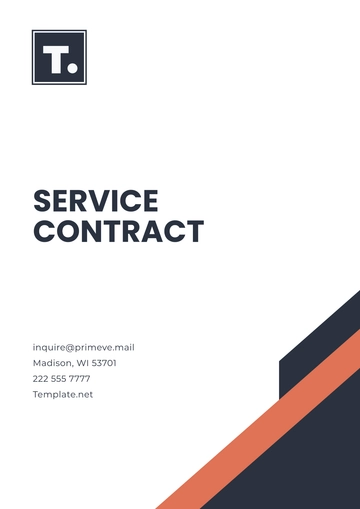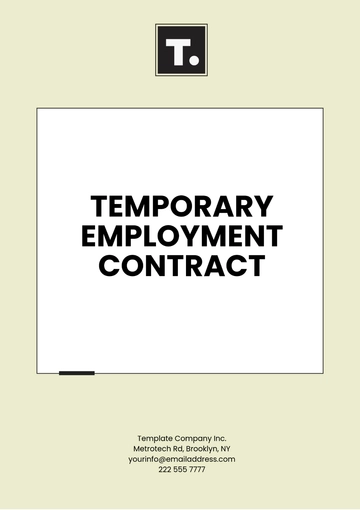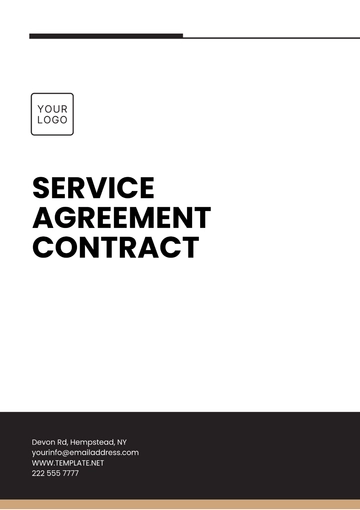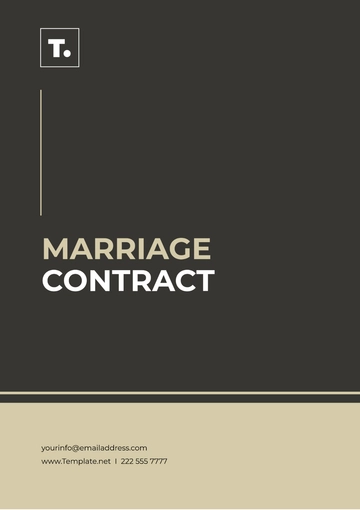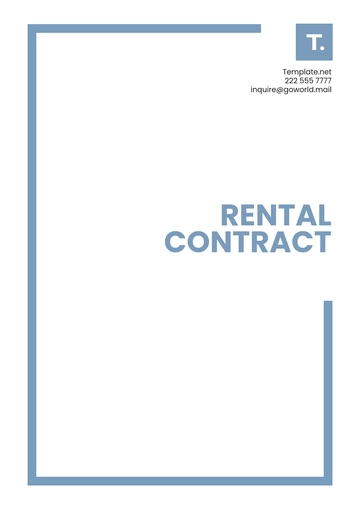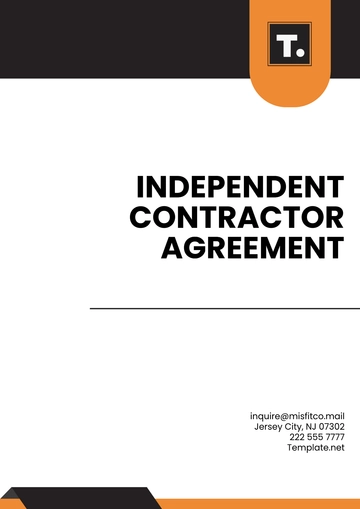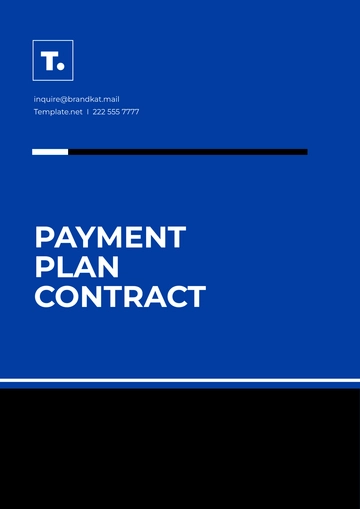Free Sales SOP for Drafting and Finalizing Contracts
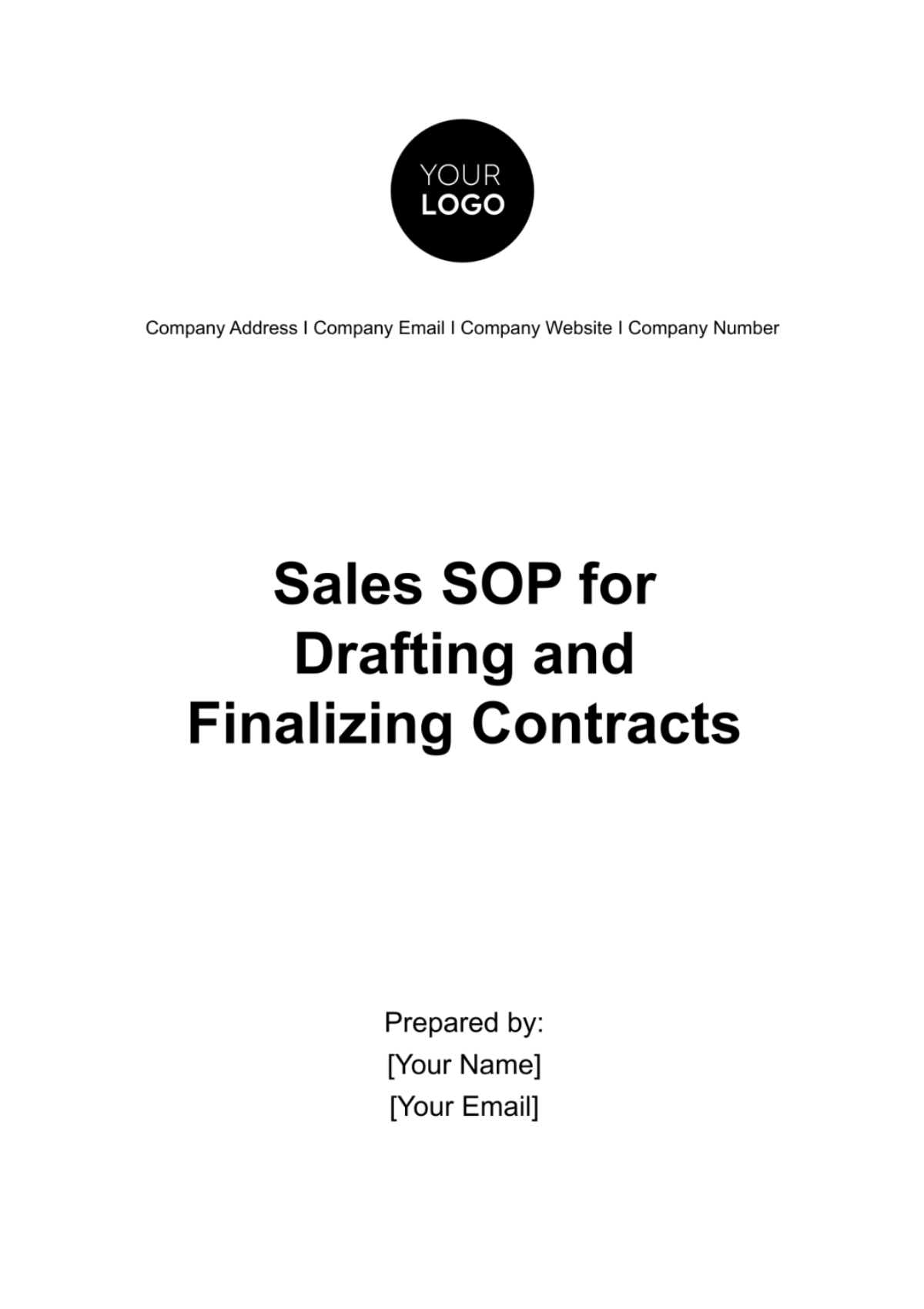
1. Executive Summary
This Sales Standard Operating Procedure (SOP) for Drafting and Finalizing Contracts is designed to serve as an indispensable guide for all stakeholders within [Your Company Name] engaged in any aspect of the contract lifecycle—from initial creation to the final signatures. The intent is to streamline the entire contract process, thereby significantly reducing cycle times and minimizing errors. The SOP incorporates a structured methodology that lays out step-by-step guidelines, designating roles and responsibilities along with associated timelines.
Moreover, this document aims to provide a safeguard against legal vulnerabilities by ensuring that each contract adheres to relevant laws, regulations, and corporate policies. Beyond legal compliance, it endeavors to contribute to customer satisfaction by making the contracting process smoother and more transparent. In turn, this fosters a healthy, long-term business relationship between the company and its clients. This SOP is not just a procedural guide, but also an instrument for risk mitigation, quality assurance, and continuous improvement in the realm of sales contracting at [Your Company Name]. It is built to be a dynamic document, subject to regular review and updates to align with evolving business needs and legal landscapes.
2. Objective
The objective of this Sales Standard Operating Procedure (SOP) is to outline a systematic and uniform set of guidelines for drafting, reviewing, negotiating, and finalizing sales contracts at [Your Company Name]. This procedure aims to:
2.1 Standardization
Establish a standardized contract framework that aligns with the company’s core values, legal requirements, and commercial goals, thereby minimizing variability and errors in contract creation.
2.2 Compliance
Ensure that all contractual agreements are compliant with relevant local, state, and federal laws, as well as industry-specific regulations, to mitigate legal risks.
2.3 Clarity and Transparency
Promote clarity and transparency in all contract-related communications between internal departments, as well as with external clients and vendors, to avoid misunderstandings and disputes.
2.4 Efficiency
Streamline the contract drafting and finalization process by utilizing templates, checklists, and automated tools where applicable, in order to expedite the sales cycle without compromising on quality.
2.5 Risk Mitigation
Implement robust risk assessment and due diligence practices during the contract review stage to identify and address potential vulnerabilities, thereby safeguarding the company’s interests.
2.6 Consensus Building
Facilitate effective negotiation strategies that focus on mutual benefit and long-term relationship building, ensuring that the finalized contracts serve the best interests of all parties involved.
2.7 Training and Development
Equip sales and legal teams with the requisite knowledge and skills for drafting and finalizing contracts through regular training programs, workshops, and other developmental activities.
2.8 Accountability and Governance
Assign clear roles and responsibilities for each stage of the contract lifecycle, backed by a governance framework that includes periodic audits, performance metrics, and feedback mechanisms for continuous improvement.
2.9 Scalability
Build a flexible contract management system that can be easily adapted to accommodate the growth and diversification of [Your Company Name]'s product or service offerings, as well as entry into new markets.
By adhering to this SOP, [Your Company Name] aims to enhance the quality, consistency, and legality of its sales contracts, thereby boosting customer satisfaction, minimizing operational complexities, and contributing to overall business success.
3. Scope
3.1 Applicability
This Sales Standard Operating Procedure (SOP) is applicable to all employees, contractors, and stakeholders who are directly or indirectly involved in the sales process within [Your Company Name]. This encompasses multiple departments and roles as outlined below:
3.2 Departments and Roles
Department | Roles |
|---|---|
Sales Team | Representatives, Sales Managers, and Sales Directors are responsible for initial contract drafting, negotiations, and liaising with customers. |
Legal Department | Legal Advisors and Counsels are tasked with reviewing, advising on legal clauses, and ensuring that contracts comply with all relevant laws and regulations. |
Contract Management | Contract Managers and Coordinators are responsible for the administration, tracking, and renewal of contracts. |
Finance Department | Financial Analysts and Accountants may be involved in reviewing the financial terms and conditions, ensuring that they are in line with the company’s objectives. |
Compliance Team | Ensures that the contract adheres to industry-specific rules, ethical standards, and company policies. |
Product and Services Team | May be consulted for technical specifications and commitments related to the company's offerings. |
Customer Support | Involved in the post-contractual stage for service delivery and customer satisfaction metrics. |
Senior Management | Executives may be involved in high-value contracts, setting overall policies, or resolving escalated issues. |
3.3 Contract Types
This SOP is designed to govern various types of sales contracts, which may include but are not limited to:
Standard Sales Contracts
Service Level Agreements (SLAs)
Non-Disclosure Agreements (NDAs)
Vendor and Supplier Contracts
Partnership Agreements
Licensing Agreements
3.4 Geographical Limitations
While this SOP is primarily focused on domestic contracts, it should also serve as a foundational guideline for international contracts, subject to additional considerations for local laws, tax regimes, and cultural nuances.
3.5 Exclusions
This SOP does not cover non-sales related contracts such as employment agreements, real estate leases, or other internal organizational contracts unless explicitly stated.
3.6 Revision and Updates
This SOP is subject to periodic review and updates to adapt to changes in legislation, market conditions, or [Your Company Name]’s internal policies. All relevant parties will be notified of any changes in a timely manner.
By defining this scope, [Your Company Name] aims to ensure that the SOP has comprehensive coverage, leading to a more effective and cohesive contract drafting, review, negotiation, and finalization process across the organization.
4. Responsibilities
The success of drafting and finalizing sales contracts at [Your Company Name] involves collaboration across multiple departments, each with its own set of specific responsibilities. This section aims to clearly define the roles and duties of each department involved in the contract process, from inception to finalization.
4.1 Sales Team
Role: Draft Initial Contract
Needs Assessment: Conduct a thorough analysis of customer needs to understand what should be included in the contract.
Template Utilization: Use company-approved contract templates as a baseline for creating new contracts.
Preliminary Terms and Conditions: Define initial terms and conditions, pricing, and delivery timelines.
Customer Liaison: Serve as the primary point of contact with the customer during the initial stages of contract development.
Cross-Departmental Coordination: Collaborate with the legal team, contract managers, and other relevant departments to ensure that the contract aligns with company policies and customer requirements.
4.2 Legal Team
Role: Review and Advise on Legal Aspects
Compliance Check: Review the draft contract to ensure it complies with applicable laws, regulations, and industry standards.
Risk Assessment: Identify and assess any potential legal risks and recommend mitigations.
Clause Crafting: Advise on or draft specific legal clauses that protect the company's interests while adhering to legal norms.
Revision Management: Keep track of revisions and modifications made during the negotiation process to ensure legal consistency.
Final Approval: Provide the final legal sign-off on the contract before it goes for executive approval or client acceptance.
4.3 Contract Manager
Role: Oversee Negotiation and Finalization
Stakeholder Coordination: Act as the liaison between the sales team, legal team, and other internal stakeholders during the negotiation process.
Negotiation Strategy: Develop and implement negotiation strategies that align with the company’s objectives and customer needs.
Version Control: Manage multiple iterations of the contract, ensuring that all changes are properly documented and agreed upon.
Time Management: Keep track of contractual timelines, such as negotiation deadlines and contract expiry dates, and ensure that milestones are met.
Finalization and Archiving: Ensure that the finalized contract is properly signed, stored, and accessible in the company’s contract management system.
By clearly defining these responsibilities, [Your Company Name] aims to create a seamless and efficient process for drafting, reviewing, negotiating, and finalizing sales contracts. This multi-departmental approach helps to mitigate risks, ensure legal compliance, and achieve better outcomes for both the company and its customers.
5. Procedure
The following section provides a comprehensive roadmap detailing the procedure for drafting, reviewing, negotiating, and finalizing sales contracts at [Your Company Name]. To streamline the process and ensure efficiency and accountability, we have divided the procedure into four key phases: Initial Draft, Review, Negotiation, and Finalization. Each phase has specific steps, tasks, and assigned responsible parties,
Procedure Table
Phase | Step | Task | Responsible Party |
|---|---|---|---|
Initial Draft | 1 | Identify Needs | Sales Team |
Initial Draft | 2 | Draft Contract | Sales Team |
Review | 1 | Initial Review | Legal Team |
Review | 2 | Feedback Loop | Sales Team |
Negotiation | 1 | Customer Review | Customer |
Negotiation | 2 | Negotiation | Contract Manager |
Finalization | 1 | Final Review | Legal Team |
Finalization | 2 | Customer Signature | Customer |
Finalization | 3 | Company Signature | Contract Manager |
By following this structured table, [Your Company Name] aims to assure that all aspects of the contract process are carried out efficiently, accurately, and in accordance with the company's policies and legal requirements. This table serves as a centralized reference point for all departments and individuals involved, outlining their specific roles and timelines in the contract lifecycle.
6. Documentation
Proper documentation is a critical aspect of contract management, serving not only as a record of transactions and agreements but also as an essential component for compliance, audit, and dispute resolution. In line with [Your Company Name]'s commitment to transparency and accountability, all contracts, irrespective of their stage or status, must be stored securely in the [Designated File Location]. This is to ensure that they are readily accessible to authorized personnel for reference, review, and monitoring.
In addition to finalized contracts, it is imperative to retain copies of all draft versions, amendments, and addendums that were created during the negotiation process. The drafting history can offer valuable insights into the intent and interpretation of various clauses, which can be instrumental in resolving any ambiguities or disputes that may arise later on.
Beyond contractual documents, all email correspondences, memorandums, and meeting minutes related to the contract should also be archived. These pieces of communication can provide context to the contract and serve as supplementary evidence in the event of a legal review or audit.
Furthermore, documentation should be done in accordance with the company's data retention policy, ensuring that files are kept for the required legal duration and are disposed of securely when no longer needed. This is crucial for fulfilling both legal obligations and internal compliance requirements.
To ensure that the documentation process is standardized and error-free, it may be beneficial to employ a contract management system that allows for centralized storage, robust search capabilities, version control, and permission-based access. By strictly adhering to these documentation guidelines, [Your Company Name] aims to maintain the highest standards of organizational efficacy, legal compliance, and risk management.
7. Compliance and Legal Considerations
Ensuring that all contracts adhere to legal requirements and regulatory standards is of paramount importance to [Your Company Name]. Compliance is not just about avoiding legal repercussions; it is also about safeguarding the company’s reputation and maintaining the trust of clients, partners, and stakeholders. The contracts entered into by [Your Company Name] must be in strict compliance with the laws of the specified jurisdiction—[Jurisdiction] in this case—as well as any other applicable international laws or industry-specific regulations.
Key Compliance Area | Details |
|---|---|
Local, State, and Federal Laws | Contracts must be crafted in alignment with all local, state, and federal laws, which may pertain to elements like consumer protection, employment, taxation, and environmental regulations. |
Industry-Specific Regulations | For companies in regulated sectors like healthcare, finance, or energy, additional sets of rules and standards may apply. |
Data Protection and Privacy | Ensuring compliance with data protection and privacy laws such as GDPR or CCPA is critical, especially when the contract involves sharing or processing of personal data. |
Intellectual Property Rights | Contracts should explicitly outline the ownership and permitted use of any intellectual properties that are part of the transaction. |
Ethical Considerations | Contracts should also adhere to the company’s code of ethics and any corporate social responsibility policies, especially those related to labor practices, sustainability, and community impact. |
Consequences of Non-Compliance:
Failure to adhere to these compliance measures can result in various negative outcomes:
Repercussion | Details |
|---|---|
Legal Penalties | Non-compliance can lead to lawsuits, fines, and other legal penalties that could be financially crippling for the company. |
Reputational Damage | Legal issues can tarnish the company’s reputation, causing loss of client trust and potential future business. |
Operational Disruption | Regulatory action can lead to operational delays and even force the company to cease certain business activities. |
Loss of Competitive Edge | Companies that are viewed as non-compliant may lose out to competitors who are perceived as more reliable and trustworthy. |
To avoid these risks, [Your Company Name] should engage legal advisors proficient in the laws of [Jurisdiction] and the industry in which the company operates. These experts should be involved at every stage of the contract lifecycle, from initial drafting to finalization and subsequent review. By maintaining rigorous standards of legal compliance, [Your Company Name] aims to conduct its business activities with integrity, fostering a culture of accountability and trust.
8. Revision and Update Procedure
This Standard Operating Procedure will undergo an annual review facilitated by the specific team assigned, referred to as the [Designated Team]. Should there be any amendments, adjustments or alterations, it is required that these changes pass through an approval process headed by [Approval Authority], as their consent is mandatory for any changes to be finalized and implemented.
- 100% Customizable, free editor
- Access 1 Million+ Templates, photo’s & graphics
- Download or share as a template
- Click and replace photos, graphics, text, backgrounds
- Resize, crop, AI write & more
- Access advanced editor
Optimize your contract management with Template.net's Sales SOP for Drafting and Finalizing Contracts Template. Designed for efficiency and compliance, the templates fully editable and customizable using our Ai Editor Tool that helps streamlines your sales process from drafting to finalization. It includes clear objectives, scope, responsibilities, step-by-step procedures, and legal guidelines to ensure you stay on track and compliant.
You may also like
- Rental Contract
- Contractor Contract
- Contract Agreement
- One Page Contract
- School Contract
- Social Media Contract
- Service Contract
- Business Contract
- Restaurant Contract
- Marketing Contract
- Real Estate Contract
- IT Contract
- Cleaning Contract
- Property Contract
- Supplier Contract
- Partnership Contract
- Food Business Contract
- Construction Contract
- Employment Contract
- Investment Contract
- Project Contract
- Payment Contract
- Student Contract
- Travel Agency Contract
- Startup Contract
- Annual Maintenance Contract
- Employee Contract
- Gym Contract
- Event Planning Contract
- Personal Contract
- Nursing Home Contract
- Law Firm Contract
- Work from Home Contract
- Software Development Contract
- Maintenance Contract
- Music Contract
- Amendment Contract
- Band Contract
- DJ Contract
- University Contract
- Salon Contract
- Renovation Contract
- Photography Contract
- Lawn Care Contract


